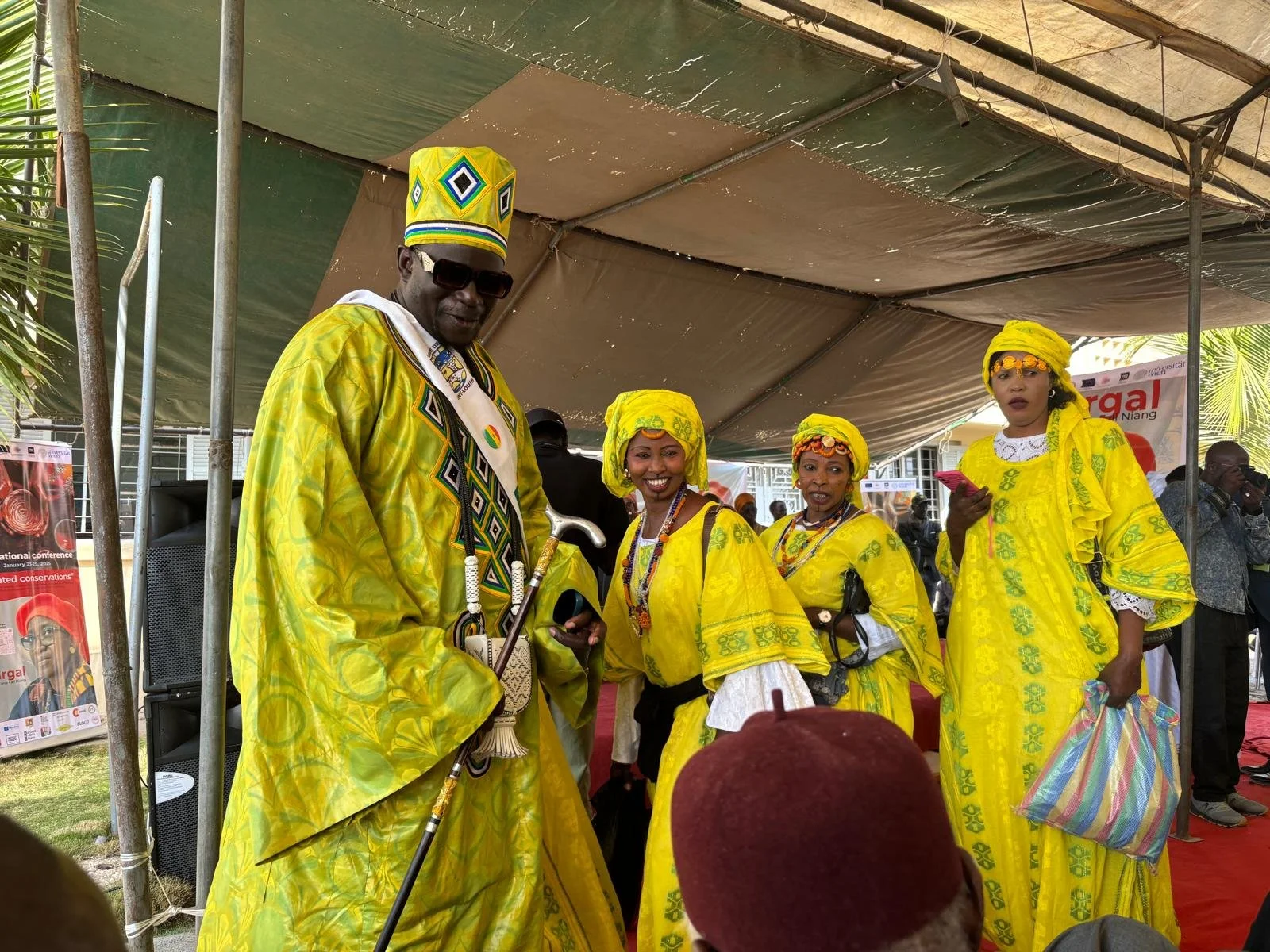What a Senegalese Hat Can Teach Us About Global Cultural Flows – by Anna-Marie Kroupová
My recent trip to Senegal for the Situated Conservations conference was an eye-opening journey, filled with profound experiences that have stayed with me long after returning to Vienna. The program was packed with visits to numerous museums, cultural institutions, and engaging discussions with scholars, activists, and heritage practitioners. It was a rich, diverse experience, and for me personally, it was incredibly thought-provoking.
This blog’s author Anna-Marie Kroupová on Gorée island visiting one of the exhibitions at La Maison des Esclaves
The Unexpected Story of the Lafa Hat
One of the moments that continues to resonate with me was the story of the Lafa hat. This hat, with its distinctive pattern and pom-pom, is widely regarded as quintessentially Senegalese, and it’s impossible to miss on the streets of Senegal. So, you can imagine my surprise when I learned that its origins actually lie in the former socialist Czechoslovakia, the predecessor state of my home country. The hat remains popular in Czechoslovakia’s successor states, especially in winter months.
This unexpected discovery was a beautiful example of how a single object can tell a complex story of circulation, shifts in meaning, and cultural interconnection. It made me reflect on how cultural ties can manifest, even across vast geographical distances, and how the flow of ideas, symbols, and practices transcends borders.
A Conference That Brought Heritage to Life
The conference itself, which was held in honor of Fatima Fall Niang, also left a lasting impression. The format was refreshingly different from the typical Western and European conferences I’m accustomed to. While academic discourse was central, there was a seamless integration of intangible cultural heritage into the program.
We were treated to performances of dance, song, and other artistic expressions, which not only provided a welcome break from the academic discussions but also served as a constant reminder of the very subject matter of our research. It was a vivid, living representation of the cultural landscape we were studying.




Urgent Debates on Museums, Institutions, and Representation
What stood out most in the academic discussions was the urgency and relevance of the issues being addressed. In Senegal, new universities and museums are being established, creating a dynamic shift in institutional structures. The lively and passionate debates revolved around who gets a seat at the table in these processes, whose knowledge and perspectives are considered, and how to ensure fair representation without falling into the trap of knowledge exploitation.
The role of traditional communities in shaping these new institutions and structures was at the forefront, and the conversations were both challenging and inspiring.
Reflections on Cultural Exchange and Heritage Preservation
Overall, my time in Senegal was a profound experience that left me with new insights into the intersection of culture, history, and heritage. It reminded me of the complexities of cultural exchange and the need for thoughtful, inclusive discussions when it comes to shaping the future of heritage preservation.










We hope you enjoyed this blog—stay tuned for the final post in our series about the conference in Senegal next week!



